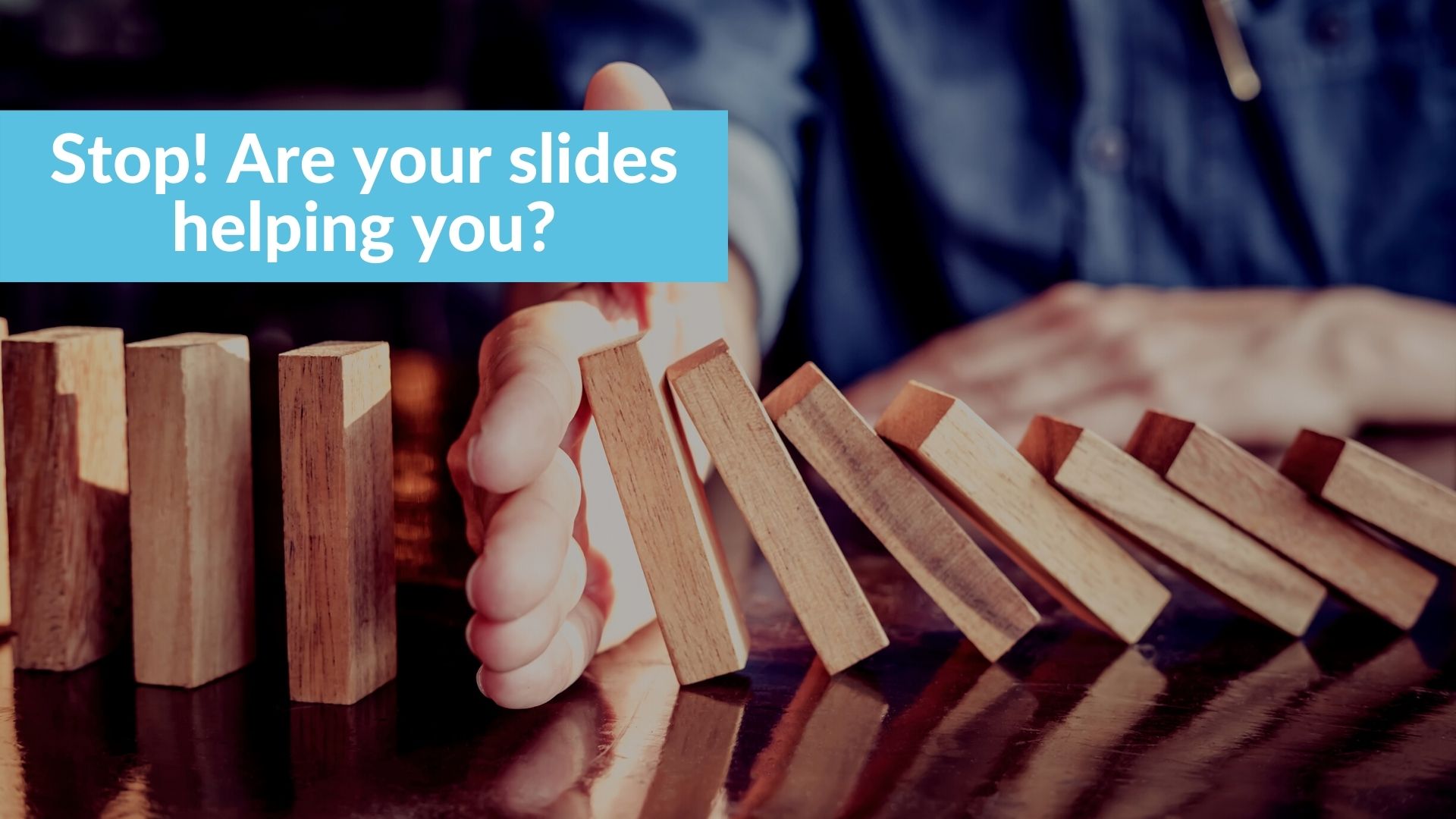Your cart is currently empty!
When was the last time you saw a presentation without any type of visual aids? How many times were those aids in slide format?
While this is not always the best course of action, slides are part of the presentation world. You can’t avoid them. Whether you agree with their use or not, you are expected to use them in presentations most of the time.
Do they help or harm your presentation?
We are visual beings, learning more from visuals than words. Yet, the combined use of visuals and words to transmit a message gives you tremendous power. So, why does this not always work?
Experiments showed that your audience would retain 50% more of the information if you use images. Can you see the problem already? Look at your slides: how many images do you have? How do they relate to your message? And how many words?
Most speakers tend to write down everything they want to say in the slides. First of all, no one will ever read that, and second, how boring do you want your presentation to be?
Another way slides can harm your presentation (meaning make it super boring) is if you direct most of your attention to them. You can’t make your whole presentation looking at the screen, or worse, turning your back on the audience to look at the projection site!
The slides are for your audience, not for you. That’s one more reason to make them full of images instead of words. Your audience can’t read, listen to you and understand everything at the same time. You’d be asking too much of them.
Don’t use your slides as a memory auxiliary, and you’ll be fine.
The true purpose of slides
With all this advice, you can be thinking right now: so how should I use them correctly? And how do I avoid these mistakes?
Having a clear vision of what you should and shouldn’t do is the first step. Then, you must train. To train effectively, you must do it in detail with the slides – you could print your slides to train, instead of using the PC, but it would not be the same, and it would affect your presentation when the day come.
You should train in the closest way possible, to the way you will be using them in your actual presentation. So you need to prepare the movements, the way you will pick a look at the slide, the moment of changing the slide… everything must be meticulously trained. Why? To make sure that your slides are the benefit you’re looking for instead of having them harm your presentation.
If you train this way, you not only will be killing it on your big day, but you will be ready to deal with some unforeseen as well. It is essential to know your slides very well, but also your posture. This way, you can go back on track after an unexpected event.
Slides in Virtual Orator
Virtual Orator is equipped with a feature that allows you to use your slides in the virtual presentation (in PDF format). This way, your virtual presentation can get as real as possible, and you can also train the way you present your slides.
The movements you must do, how long it takes with each slide, and how to keep eye contact instead of looking at the slides, among many other details that are difficult to train under other circumstances.
keep Informed
Sub to our newsletter on the top right corner to keep updated with posts like this and other news from Virtual Orator.
In the virtual experience, you have an actual audience; you have an actual projection site behind you, exactly as you will in the real deal. Real soon, you’ll even be able to set a time for each slide, and Virtual Orator will change them automatically. Are you up for this challenge?
If you are, it is time to share a little secret with you – Virtual Orator has some news! When preparing for an actual presentation, you have your own slides to upload and train, right? Now, what if… you don’t have any presentation soon? You’re just trying to improve your skills. Are you building random slides for that? Probably not.
We’ll soon have a solution for you. How does it sound an impromptu speech with slides you don’t know? Or maybe you can see them first, but you need to come up, very quickly, with a presentation that makes sense for them. Sounds fun?
If you present with slides, train with slides
Slides and other technology are often used as visual aids during presentations. However, like any other thing in the presentation, you need to train how to use it.
Many unexpected events can happen during your talk, and the most you prepare, the easiest it will be to face them naturally. Never do anything before your audience that you haven’t tried in private before.
Cátia is a psychologist who is passionate about helping children develop and train social skills.



Leave a Reply